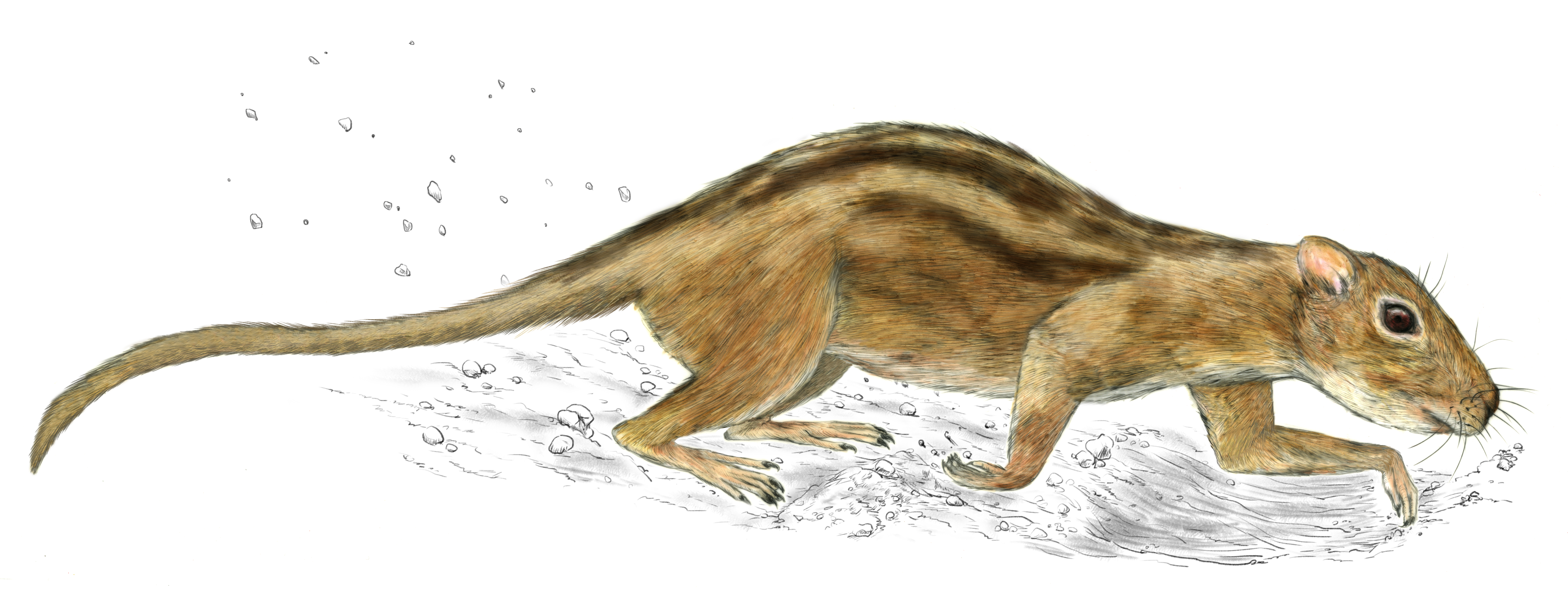
Courtesy of Luke Weaver
A cluster of fossils belonging to small mammals from the Cretaceous Period — the age of dinosaurs — has made paleontologists reconsider the first appearance of sociality in mammals.
Paleontologists found the clusters of small mammal fossils in Egg Mountain, Montana, a site known for being host to fossils from several dinosaur species. These marsupial mammal fossils are approximately 75.5 million years old, which places them in the Cretaceous Period, alongside dinosaurs. Despite their old age, the fossils are exceptionally well preserved. Eric Sargis, a professor of anthropology at Yale and co-author of the study, told the News that the fossils indicate mammals developed sociality — the tendency to associate in social groups — earlier than previously assumed.
“The majority of sociality that we see is found in placental mammals, which [humans] are included in,” Sargis said. “The assumption was that sociality evolved after the extinction of dinosaurs. [Now] not only are we finding it in a different group entirely, but also much earlier.”
The fossils were buried under a thick layer of rock, making them hard to collect without disrupting their skeletal structure, according to David Varricchio, professor of paleontology at Montana State University. According to Varricchio, paleontologists had to use jackhammers to break through the rocks. But it was this layer of rock that preserved the fossils so that paleontologists can now examine and extract valuable information from them.
The fossils were ultimately found grouped together in a “single jackhammer pass,” or one slab of rock, according to Varricchio. The paper describes clusters of fossils ranging from two to five specimens. They included the skulls and skeletons of at least 22 individuals belonging to Filikomys primaevus, a genus of multituberculate, which are marsupial, rodent-like mammals. The existence of multituberculates is associated with the Middle Jurassic and late Eocene epoch, which spans over 130 million years, making them the longest lineage of mammals observed, as explained in the paper.
“There are a number of different things we can access from their anatomy,” Sargis said. “Locomotion, diet, age and all those kinds of things.”
A detailed examination of the specimens’ teeth gave researchers a glimpse into the mammals’ lives.
The number of erupted teeth signaled the mammals’ age at the moment of their death, and the wear and tear of their teeth indicated their eating habits, according to Sargis. From the teeth, researchers concluded that the mammals were most likely omnivorous or herbivorous.
Researchers also estimated that the mammals’ ages throughout the cluster varied from matured mammals to subadults, which points towards social behavior not common during the period — a mixing of age groups not typical of simply parent-offspring interactions.
Luke Weaver, the first author of the study and a graduate student at the University of Washington in Seattle, explained that the geology of the site and the exceptional preservation of the fossils can only be explained if “these [mammals] were together in life and then dying while aggregated. This sort of grouping behavior is something you only see in social mammals that are alive today.”
Based on this grouping behavior, the researchers concluded that these mammals were social, making them the earliest mammals to exhibit sociality.
Social behavior is present in most of today’s placental mammals, which are distinguished from other mammals in that the mother carries the fetus in the uterus for a longer period of time until the fetus is almost fully developed. The fossils analyzed in this study were not from mammals, but from marsupials. Although other marsupials alive today, like kangaroos, exhibit social behavior, it is not a trait usually associated with the group.
Weaver noted that the high concentrations of fully matured mammals and subadults found at the site had never been seen before from fossils of this time period.
“This is remarkable to us,” Weaver said. “Typically, if you find well preserved fossils they are always isolated. So the fact that we are finding multiple, well-preserved individuals together marks the first time we have had any evidence for social behavior this early on.”
Before the discovery of these fossils, the first signs of social behavior were seen in placental animals, which appeared after the dinosaurs went extinct approximately 60 to 65 million years ago, according to Sargis. Because of this, he said, researchers had tied social behavior to time periods after the extinction of dinosaurs, but these findings have made researchers consider the idea that sociality could have developed even earlier.
Sargis referred to another finding of early marsupial fossils in Bolivia to point out that there is a possibility that researchers could excavate fossils which could provide more information on the first existence of sociality in mammals.
However, according to Sargis, the likelihood of this being the case is low, since exceptional preservation, like in the Egg Mountain set of fossils, is required in order to form credible hypotheses from the fossils. Sargis also mentioned the possibility that sociality evolved a number of times independently across the world, but the lack of well-preserved fossils hinders scientists’ ability to know if this was actually the case.
Filikomys primaevus went extinct approximately 35 million years ago.
Nicole Rodriguez | nicole.rodriguez.nr444@yale.edu







